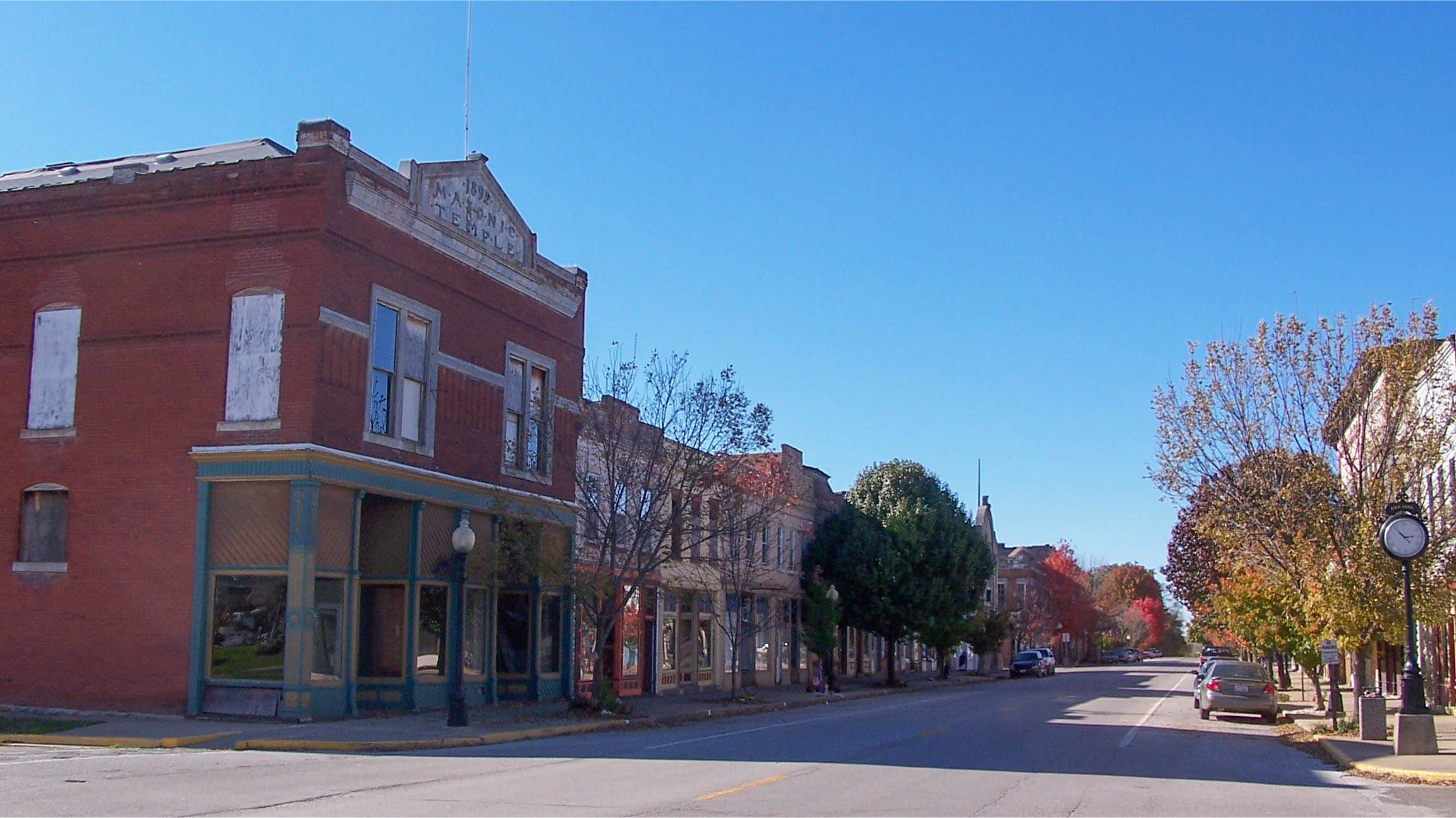Visitors Guide to Hull, Milton, New Canton, Perry & Pleasant Hill
Pike County, Illinois
Hull
The village of Hull was laid out in December of 1871 by David Hull, Rensellaer Sweet, and William Bridge at the junction of the Chicago and Alton Railroad and the Wabash and Quincy Railroad. The community sits in the middle of the Mississippi flood plain and was under water during the Great Floods of 1993 and 2008. Local history can be found at the Hull Museum is located in an old bank building and is operated by "Hull History Lives, Inc.". The museum features local memorabilia as well as a library section with genealogical records, old clippings and other means of tracing family histories. The Hull Livery Stable also belongs to the museum. Visitation to the Hull Museum is by appointment.
Milton
After the Black Hawk war ended in 1832 and people from the South and East felt that they didn’t have to fear attacks by the Native American tribes from the Indians, there was a large influx of settlers into the western portion of Illinois during the years between 1833 and 1837. This was a period of intense land speculation and the majority of towns were laid out during this time, including the town of Milton. Milton was platted by Freeman Tucker in 1835 about 12 miles southeast of Pittsfield upon a beautiful prairie. Milton grew as a typical rural town with various merchant buildings situated around a beautiful little square along with churches and schools. Present day Milton celebrates their rural heritage with a fall festival centered around the old bandstand in the square. Bandstands were common in the communities of Pike County but Milton’s is one of the few that survives. The festival provides plenty of family oriented fun and you won't find a better roast pork sandwich than the ones they serve from roasted whole hogs.
New Canton
The town of New Canton sits at the base of the Mississippi River bluffs in the flood plains in Pleasant Vale Township in northwestern Pike County. The first Europeans in the area were John Wood and Willard Keyes who made the first improvements in the area. Both Woods and Keyes would later move farther north, with Woods becoming the founder of Quincy and later Governor of Illinois. The early settlers faced many hardships, one of which was prairie fires which were set by the local tribes in the fall to drive game into traps. The farmers had to clear strips of land around their homes and fields and set backfires when the prairie fires threatened their homesteads. The town of New Canton was platted in 1835 by Charles T. Brewster, Hiram Smith, and Jesse Tittsworth and soon became a typical Illinois farming community with stores, blacksmith shops, flour mills and other similar businesses. During the Great Depression a Civilian Conservation Corps camp was located about a mile north of New Canton. Projects worked on were parks, levees, and the water system for Kinderhook. The Great River Road (IL-96) passes through New Canton and the town celebrates the local harvest with an annual fall festival. During the weekend of the Fall Color Drive there is cider and apple butter being made in the park.
Perry
Perry was laid out in 1836 by Joseph S. King and at first was named Booneville in honor of famous Kentucky frontiersman. It was first settled by Kentuckians and later by immigrants from the eastern seaboard states. The town was later renamed Perry after Commander Perry who became a national hero after he defeated the British at the Battle of Lake Erie during the War of 1812. Perry’s history can be found at the Dexter School, located two miles west of town. The school is named after Darius Dexter who donated the land and is furnished with old-time desks and fixtures and there are items such as old books and wall maps. The school is open during Fall Color Drive each year or by appointment. Perry was the birthplace of Mary Baird, the only daughter of a prosperous merchant in Perry who married William Jennings Bryan. Bryan was a supporter of popular democracy, the Democratic Party nominee for President three times, and one of the most popular speakers in American history. The earliest known presentation of Bryan's famous 'Cross of Gold' speech was at a church social at the Perry Presbyterian Church. There is a marker commemorating the event.
Pleasant Hill
Pleasant Hill is a community located on the Great River Road (IL-96) in southeastern Pike County. The town was laid out by Eli and Charles Hubbard and John McMullen in 1836 and was incorporated in 1869. Pleasant Hill is the site of the Pike County Fair which is held during the third week of July and has all the attractions one would expect from a traditional county fair. The Fair features a tractor pull, carnival attractions, a talent show, a queen contest. There is also a top rated society horse show and a demolition derby. The Fourth of July Celebration held here is a patriotic, family-fun event that concludes with a tremendous display of fireworks. The Harmon House Museum was left to the city of Pleasant Hill by the late Helen Harmon and through the generosity of the Harmon Estate and the residents of the Pleasant Hill area, the Harmon House has became one of the highlights of southern Pike County. Inside the museum, one can find a vast amount of Pleasant Hill and Pike County history. The museum is open during the Pike County Fall Color Drive and by appointment.











